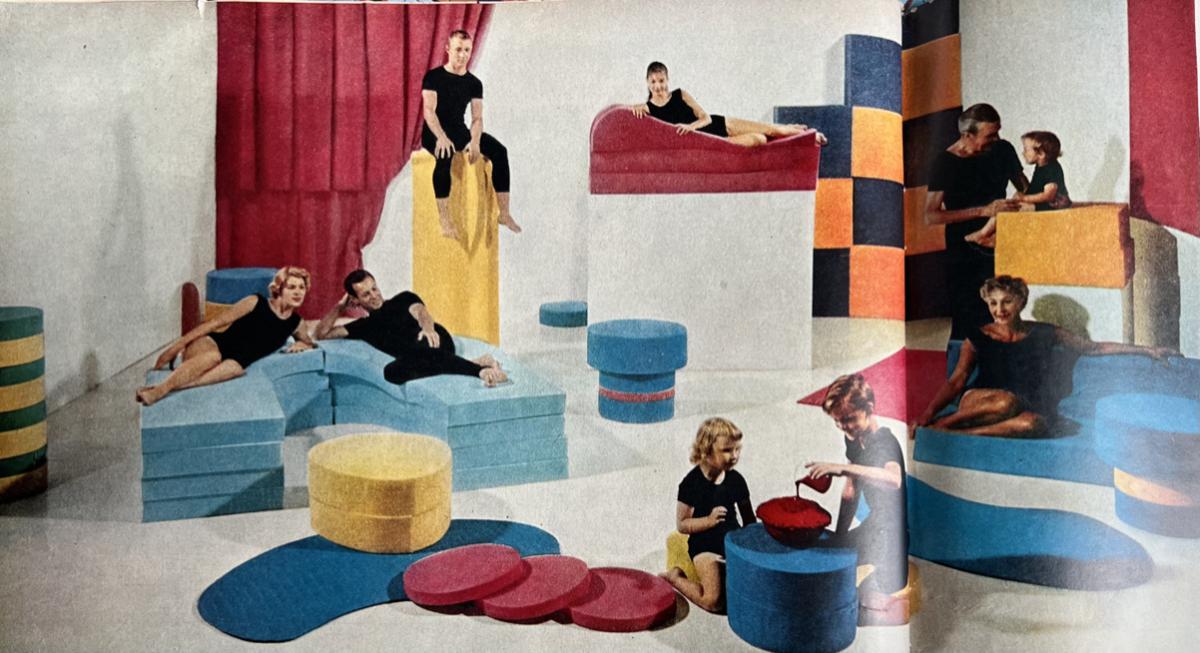Research Seminar: Isabelle Held
Virtual Event
Time 12:00 p.m.
Today polyurethane foams pad and cushion our bodies. They can be found in office chairs, sports shoes, shapewear, mouse pads, car upholstery, wheelchair seats, and mattresses. Yet, little is known about these plastic foams’ military-industrial origins. This chapter traces this history from a series of World War II US military intelligence reports that recommended the postwar transfer of plastic foams from Germany. Using a materials-centered approach this chapter explores how in the postwar US polyurethane foam’s materiality and soft appeal to the body moved from the lab to domestic spaces.

This chapter draws on interdisciplinary archival materials including the papers of plastics experts and designers as well as plastics promotional booklets. It traverses industrial, scientific, military, corporeal, and domestic environments to investigate why and how actors working for the US military and chemical companies transferred plastic foams from Germany to the US after World War II. The chapter follows polyurethane foam’s arrival on the US postwar consumer market and explores how gender and race shaped the presentation and marketing of its soft haptic properties. As documented in military reports, polymeric foams like polyurethane offered a unique range of materialities that invited touch and corporeal interaction. Key actors central to the promotion of plastic foams, including chemical company advertising staff, journalists, and industrial designers harnessed these sensual properties for foam’s postwar domestic promotion and applications, often presenting a carefully constructed ideal of white womanhood and heteronormativity.
The politics of plastic foams’ commercial application in the designed environment of the postwar US is further explored within discourse on the “soft power” of US mid-century Modernism. Chemical companies like Mobay presented polyurethane foams to designers and consumers as an ideal pliable and safe material to furnish the modern middle-class American suburban home. The chapter argues that racialized and gendered societal ideals shaped plastic foams’ promotion and this in turn impacted its applications in the postwar designed environment of the US.
Isabelle Marina Held is an interdisciplinary design historian. Employing an intersectional approach, she focuses on the body, fashion, materiality, and technology in the twentieth and twenty-first centuries. During her current Smithsonian Postdoc and Bard Graduate Center Visiting Fellowship 2022-2023, Isabelle is working on her forthcoming book, Atomic Bombshells: How Plastics Shaped Postwar Bodies, solicited by Duke University Press.
Grace Lees-Maffei of University of Hertfordshire will provide an introductory comment.
Attendees are encouraged to read Held's paper, “Soft Power: Plastic Foams, Design, and Postwar Bodies,” which may be obtained by contacting Carol Lockman at clockman@hagley.
Registration for this event is via Eventbrite.
